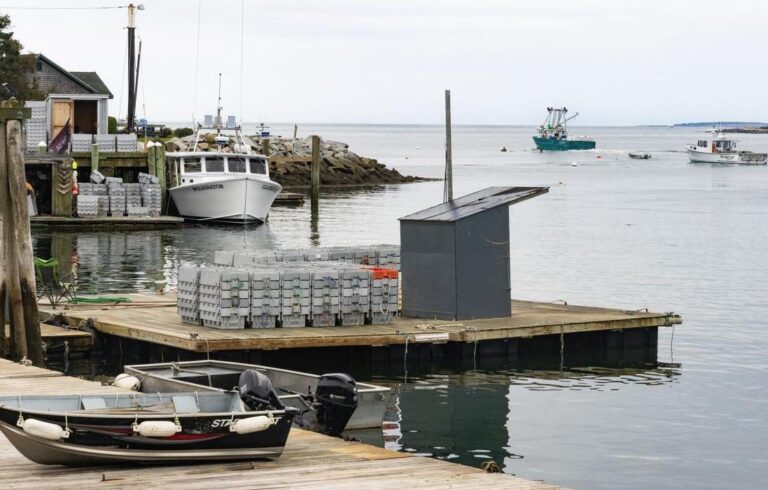QUESTION 3: An Act to Create the Pine Tree Power Company, a Nonprofit, Customer-owned Utility. Do you want to create a new power company governed by an elected board to acquire and operate existing for-profit electricity transmission and distribution facilities in Maine?
There wasn’t much the proponents and opponents agreed on during a Sept. 19 discussion in Augusta of the referendum that would have the state purchase Central Maine Power and Versant.
Proponents argued that with a nonprofit, consumer-owned utility—Pine Tree Power—profits that otherwise leave the state would be kept in Maine, thereby reducing rates. They also asserted that Mainers would be able to chart a course toward cleaner electric generation if they were able to elect representatives to run the utility.
Opponents said the purchase would be costly, take as long as ten years to come to fruition as the parties argued over compensation for the privately owned companies, bring uncertainty, and could very well result in higher rates.
The forum was hosted by E2 Tech, also known as Environmental and Energy Technology of Maine. That group is not taking a position on the Question 3 referendum measure.
Proponents on the panel included Rep. Seth Berry, a former Democratic legislator from Bowdoinham who sponsored the bill that ultimately led to the referendum question, and Lucy Hochshartner, also a Democrat and deputy campaign manager for the Pine Tree Power initiative.
Opposing the question were Tina Riley, former Democratic legislator who initially supported the creation of a publicly owned utility, and Jim Cohen, a lawyer and former Portland mayor and city councilor.
The agreed upon facts of the proposal, according to moderator Jeff Thaler, are that if passed, the referendum would have the newly created entity purchase the two electric utilities using bond funding; the new Pine Tree Power would be governed by a 13-member board, with some of its members being elected by the public; the new entity would be regulated by the Public Utilities Commission; and Pine Tree Power would go into effect in early 2025.
Hochshartner explained her support for the initiative came after hearing stories of people struggling to pay their electric bills as well as her concerns, as a farmer, about the impacts of a warming climate.
“I want to see a climate future that works for all of us,” she said.
She said in the early 20th century, there were an equal number of investor-owned and consumer-owned electric utilities. That balance tilted as the so-called robber barons of the Gilded Age purchased the utilities.
CMP’s and Versant’s combined profits were $187 million in 2022, she said, while bills were hiked 20% and 94,000 disconnection notices were sent.
Analysis found that a publicly owned utility would save $9 million over 30 years, and that savings would be seen in the first year.
The parent companies of CMP and Versant have spent $27 million to sway public opinion against Pine Tree Power, she said.
Berry said opponents have used fear tactics, not facts, and that viable examples of publicly owned utilities exist. Nebraska created a publicly owned electric utility in the 1940s, he said, and rates are lower than elsewhere. Messina, N.Y. also established a publicly owned electric utility in 1981 and rates have dropped 21%, Berry said. Other examples exist in Oregon and Winter Park, Fla., he added.
Cohen, speaking for the opponents, disputed the examples of success with the public model.
“It hasn’t been tested,” he said. “It is not a model for success.”
The governing board of Pine Tree Power would have just seven elected members, Cohen said, who only need to be 21 or older and live in Maine. They, in turn, would select six people to run the utility.
“There is no confirmation process for those six,” he said.
After the purchase, the new board would hire a grid operator, likely a private company, which is what two other publicly owned utilities have done—the Long Island Power Authority and the Puerto Rico Power Authority.
“We could have someone from another country,” running Pine Tree Power, Cohen said. It could even be CMP or Versant.
A point opponents made repeatedly is that the value of the companies—which they estimate at $13.5 billion—will be disputed by the parties.
“We are billions of dollars apart,” Cohen said. Resolution through the courts will take years. When a publicly-owned utility was formed in Long Island, N.Y., he said, resolution on compensation took 13 years.
“None of us in this room know what these assets are,” Cohen said of the Maine utilities, and cited the case of a water district in Rangeley where the ownership of old wooden pipes was disputed.
“We’re going to be fighting about Maine Yankee,” the shuttered nuclear plant and other property which is why “This is going to be a five-year battle.”
Cohen added that the union representing CMP and Versant’s workers is opposing Question 3.
Riley said the interest on the borrowing to buy the utilities would be passed onto ratepayers.
“The rosy predictions of the proponents are far from accurate,” she said.
Berry said the bill creating the referendum defines assets as “utility facilities” and that properties such as Maine Yankee are optional.
Hochshartner said utilities frequently are bought and sold, including both CMP and Versant, and that the difficulty in doing so was exaggereated. She also noted that Avangrid, CMP’s parent company, posted a $2.7 billion profit in the first half of this year, and that the utilities typically produce 8% to 12% return on investment.
To Riley’s statement that Pine Tree Power “is a huge risk,” Hochshartner replied, “There are certain things that are known—CMP and Versant are not working for us. They’re not designed to work for us.”





